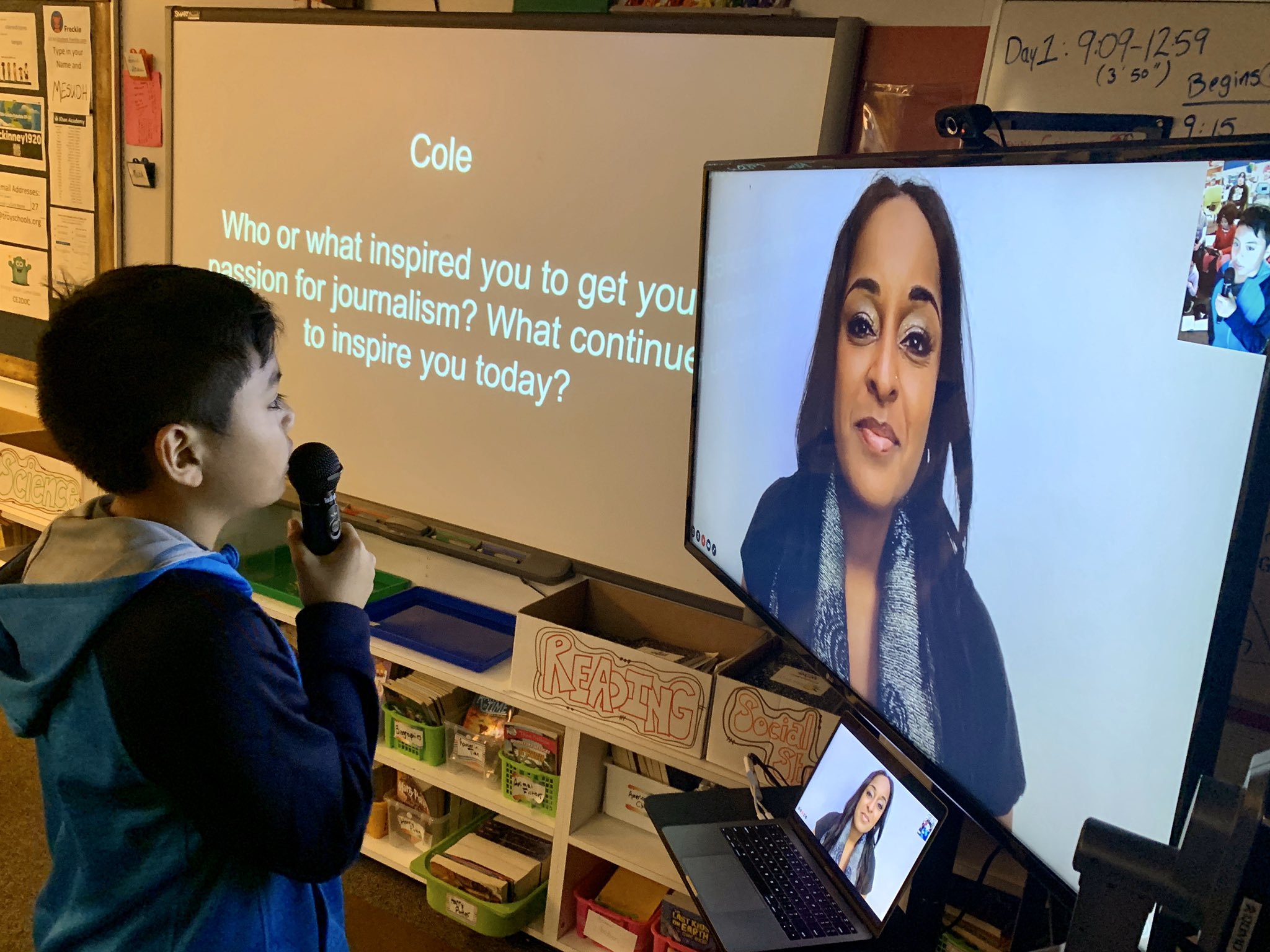Pulitzer Center Update March 13, 2020
Pulitzer Center Offers Free, Virtual Journalist Visits for Schools

Connect your students with journalists and the global issues they cover
The Pulitzer Center offers free virtual journalist visits to K-12 schools worldwide. We have worked with more than a thousand journalists over the years, covering diverse topics and geographic regions, and can connect your class with a speaker whose reporting directly supports your teaching.
We use many different platforms to connect, including Skype, Google Hangouts, and Zoom, and will work with you to identify the best technology for your learners, whether they are studying in the classroom or at home. Virtual journalist visits are a great way to help students...
- Understand how what they're studying affects people's lives
- Learn how research, writing, critical thinking, multimedia, and more skills are used in journalism
- Practice preparing and asking questions of an expert
- Get excited about using the news to learn about the world
- And much more!
To schedule a virtual journalist visit, just click here! We will match you with a journalist based on your request.
Here are some of the Pulitzer Center journalists who have visited classrooms virtually, and what the educators they visited had to say!
The journalist: Melissa Noel, a freelance multimedia journalist, shared her reporting on the Jamaican children left behind when their parents migrate abroad for work.
The educator: "The experience of connecting with professional journalists is invaluable to young students as it models for them the application of the skills they learn about in the classroom. Further, it is vital we honor journalists and their craft, especially because of the times we live in." —6th grade teacher in Bloomfield Hills, MI
The journalist: Isabella Gomes, a journalist and epidemiologist, shared her reporting on access to health care for victims of human trafficking.
The educator: "This is a great way to bring experts into the class room to engage and inform students in a medium (Skype) which they are very familiar with. It is also invaluable for schools with budget issues like mine because it allows me as a teacher to bring an expert into the classroom without paying for speaking fees, hotels, travel costs or even busing for a field trip. Programs like this help bridge divides between schools with larger funding budgets and schools that get by on the bare minimum. It's invaluable!" —8th grade teacher in Rochester, NY
The journalist: Jaime Joyce, executive editor at TIME for Kids, shared her reporting on what school is like for children in refugee camps around the world.
The educator: "The students comments and questions were high-level and from a variety of students. They informed me afterwards that the topics opened their minds to issues around the world they may have passingly heard about, but didn't understand or know about too deeply." —6th grade teacher in Washington, D.C.
The journalist: Erica Ayisi, a multimedia journalist, shared her reporting on the ethics of the international hair trade.
The educator: "We saw where your passions can take you in life, but also made the realization that the path isn't easy. They got a real-life look into what being a reporter (freelance) entails versus just what they see on the local news stations." —High school teacher in Shrewsbury, MA
